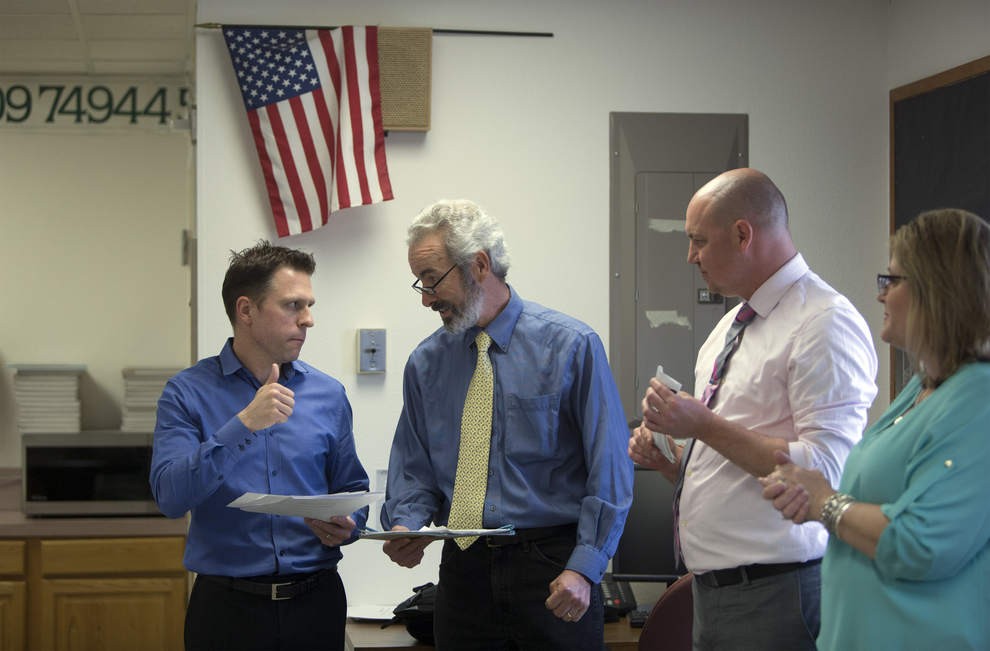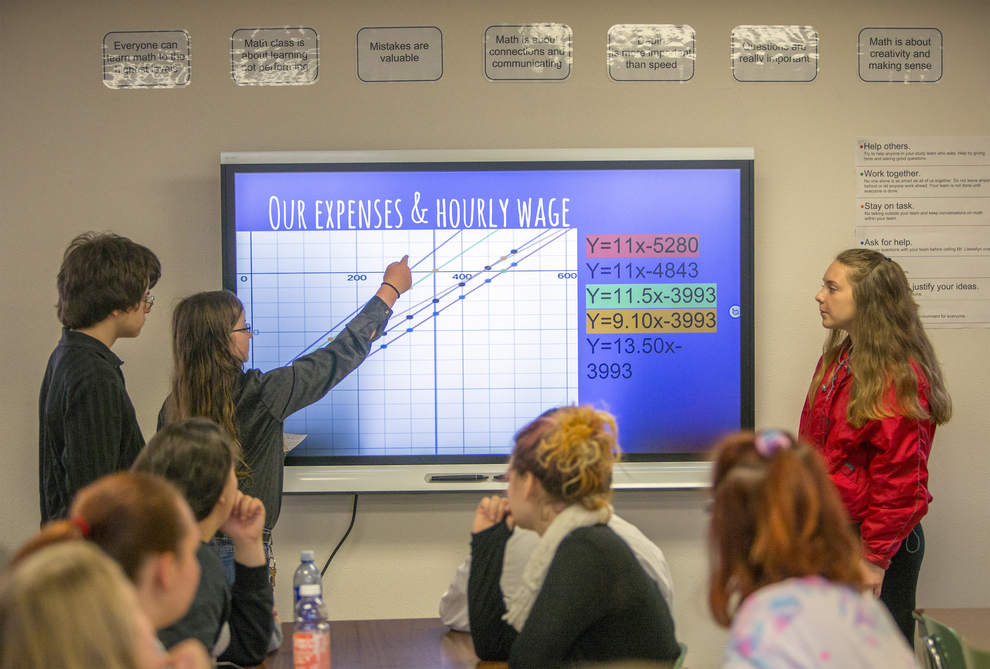On Friday, April 22, Lowell High School students delivered a presentation on Oregon’s minimum wage, as part of a math assignment. Students presented to their classmates, joined by Oregon Senator, Floyd Prozanski. KEZI and The Register-Guard came out to cover the presentation — you can see their coverage below.
By Alisha Roemeling
The Register-Guard
After examining the estimated cost of living in Oregon and crunching some numbers, students at Lowell Junior/Senior High School said Friday they may take their education more seriously — and possibly open a savings account.
Eighth-grade students in Taylor Llewellyn’s math class gave presentations about Oregon’s minimum wage and whether that hourly rate would be enough to sustain them, or their hypothetical future families.
The students presented their findings to their fellow classmates, Lowell School Board member Suzanne Kintzley and Vice Principal Johnie Matthews. They also were joined by a special guest — State Sen. Floyd Prozanski, D-Eugene.


